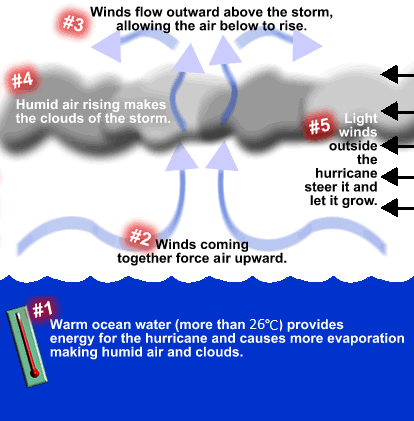How are typhoons formed?
1 Answer
The same way as a hurricane since they are the same thing.
Explanation:
Start with an unstable air mass formed over a dry area (like Australia or Africa)
The air mass moves over warm ocean water. Warm as in at least 26.5 C or 80 F.
As the air mass is unstable it will cause convergence in the lower part of the atmosphere., over the warm water. As the air comes together it will rise.
Condensation occurs aloft, forming convective cloud. This occurs to a great extent forming cumulonimbus clouds. The air continues to rise but because the water below is so warm, more moisture gets sucked up.
It is usually said that the winds aloft are light. This is only sort of true. What it should include is no wind sheer aloft. This means that the rising air is allow to continue to rise in the same column, over the warm water. If the winds are too strong or there is a wind sheer (change in direction and strength) the rising air will move away and the developing storm will "fall over" for a lack of a better term.
This occurs between 5 and 20 degrees latitude. At those latitudes the Coriolis effect is light but not non-existent. Light Coriolis allows the convergence to continue, whereas a stronger Coriolis will slow the convergence as it deflects the air due to the rotation of the Earth.
So the air keeps rises and forms more cloud, but because you have a whole ocean of warm water underneath the storm keeps sucking up moisture. This forms a multitude of cumulonimbus clouds that form together into a tropical storm and eventually a typhoon or hurricane.

http://expeditieaarde.blogspot.ca/2013_03_01_archive.html
This image simplifies it but it has the general point.
